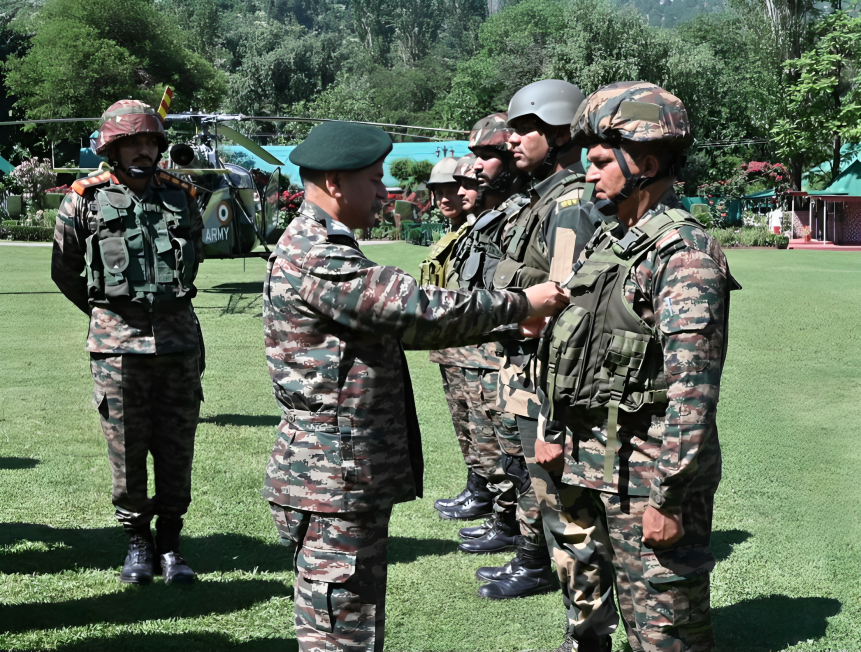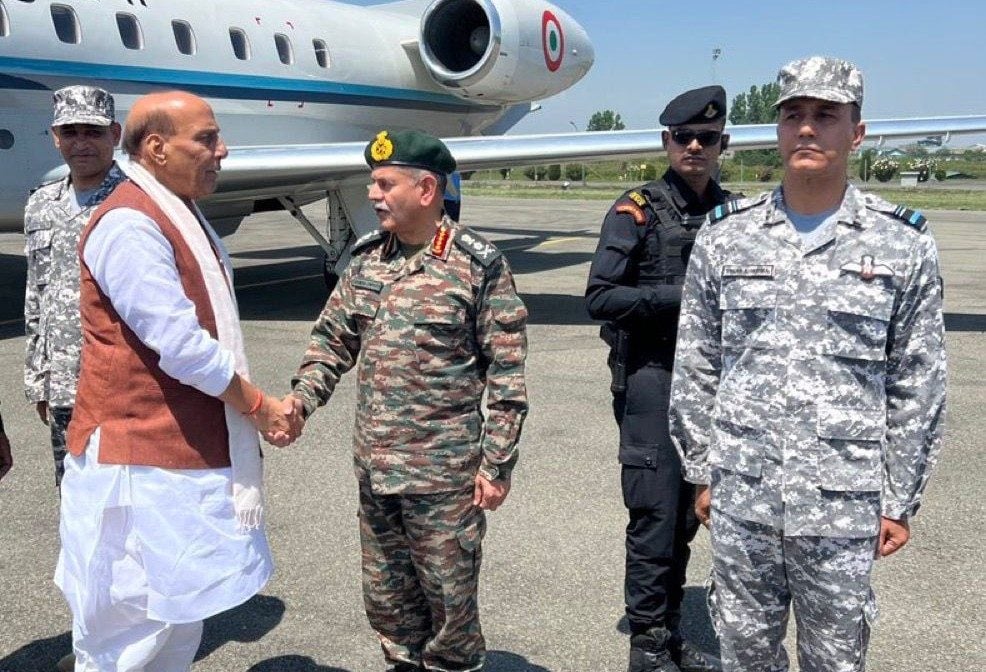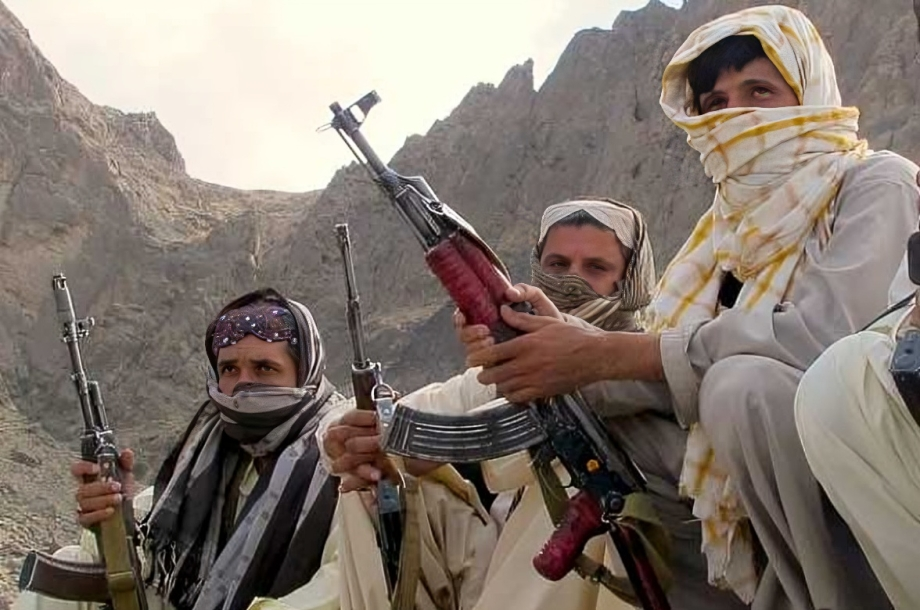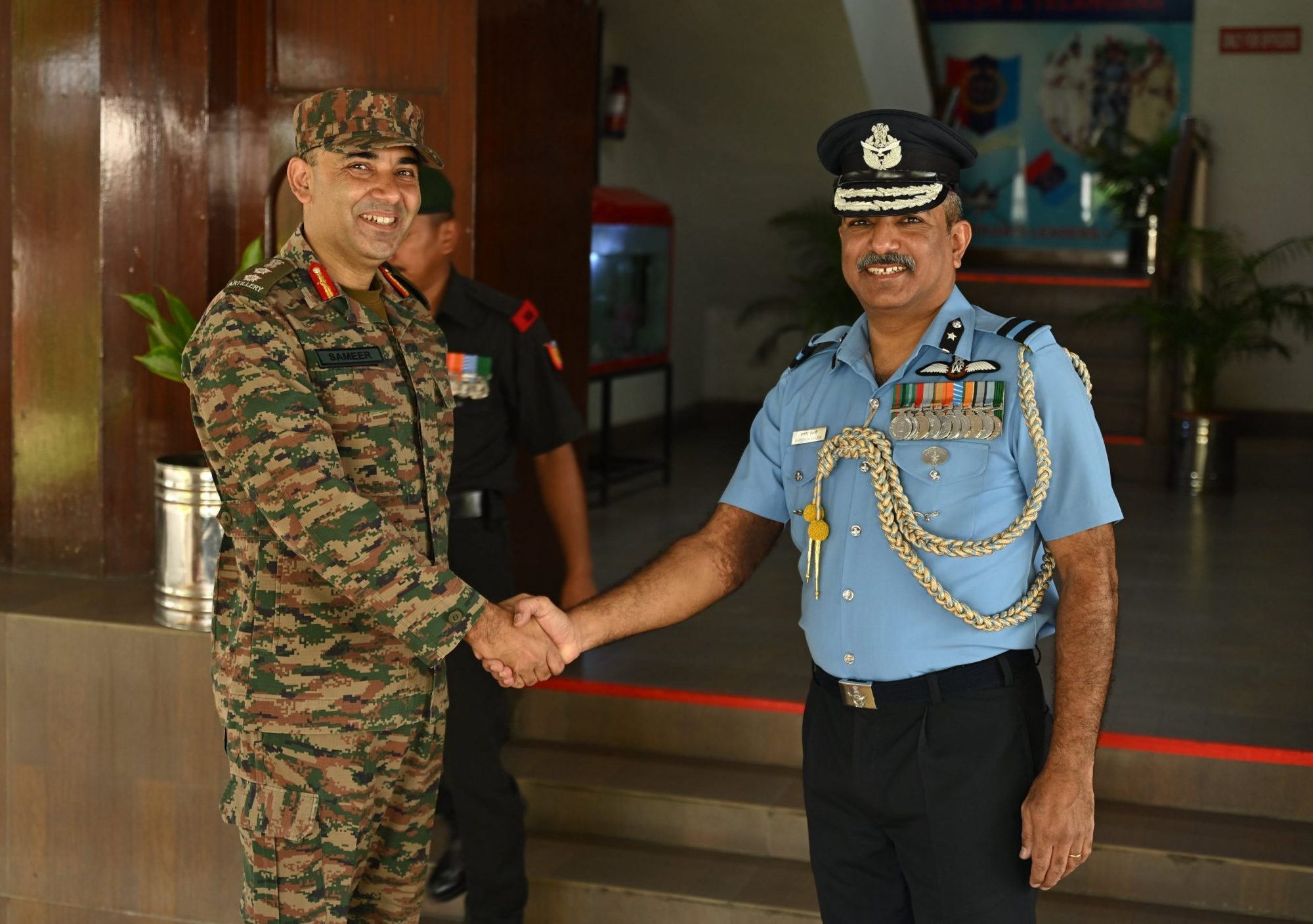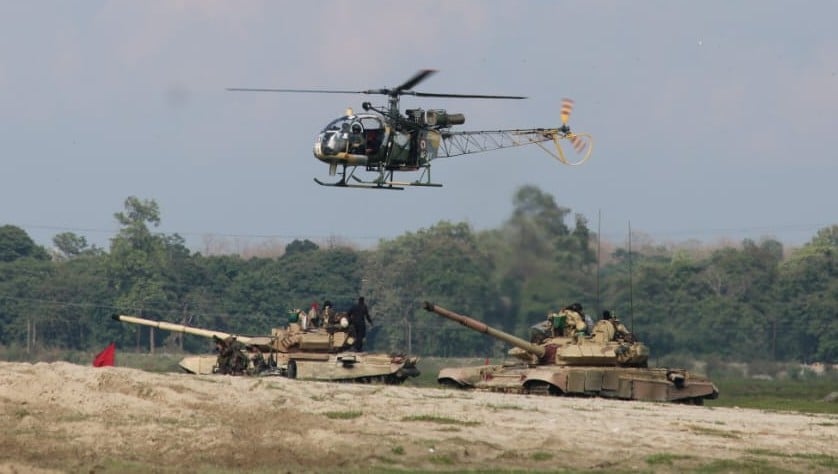COAS General Upendra Dwivedi Commends Troops for Operation Sindoor Success in Dagger Division
In a morale-boosting visit to forward positions in Jammu and Kashmir, Chief of Army Staff (COAS) General Upendra Dwivedi praised…
DRDO Unveils Indigenous Desalination Technology for Indian Coast Guard
In a major stride toward technological self-reliance and maritime readiness, the Defence Research & Development Organisation (DRDO) has developed an…
Defence Minister Rajnath Singh Visits Badami Bagh Cantt in Srinagar
In a high-stakes visit amid escalating regional tensions, Defence Minister Rajnath Singh arrived in Srinagar today to meet Indian Army…
14 Pakistani Army Soldiers Killed in an Ambush by BLA in Panjgur
The Baloch Liberation Army (BLA) has claimed responsibility for a deadly ambush on a Pakistani military convoy in the Panjgur…
Air Commodore Narsingh Sailani Takes Charge as Deputy Director General of NCC AP&T Directorate
In a formal ceremony held on May 13, the National Cadet Corps (NCC) Directorate of Andhra Pradesh and Telangana (AP&T)…
Indian Army’s “Exercise Teesta Prahar” Demonstrates Tactical Excellence in North Bengal
The Indian Army successfully conducted "Exercise Teesta Prahar," a large-scale military drill held at the Teesta Field Firing Range in…

